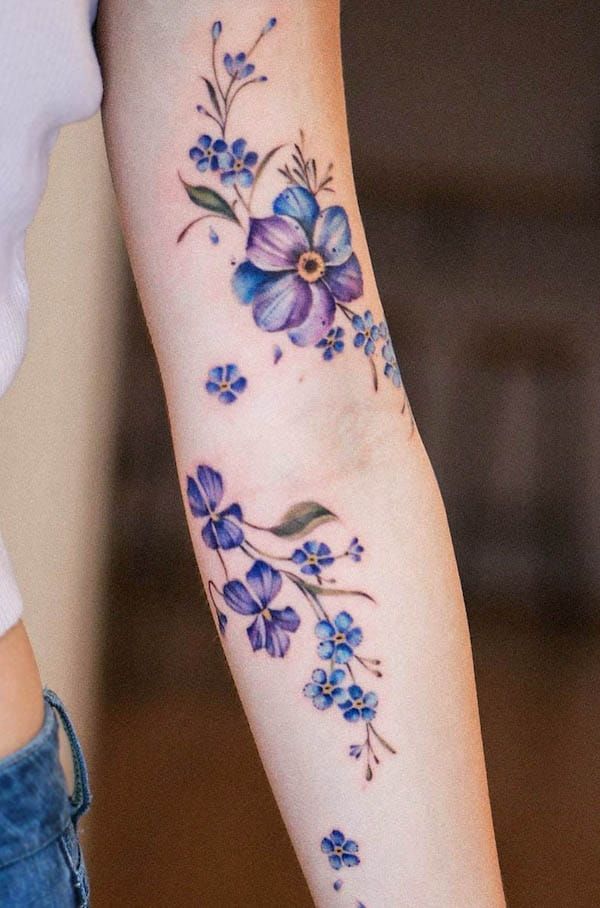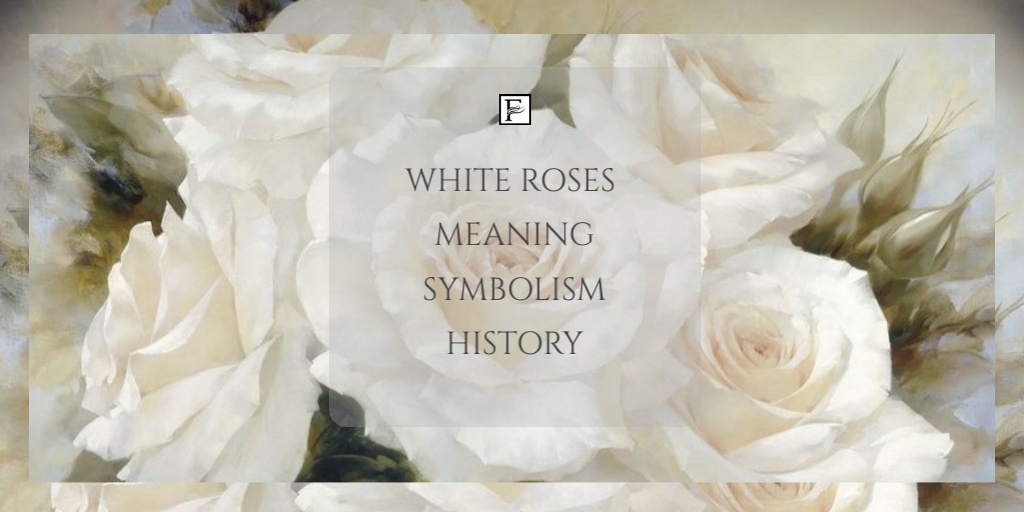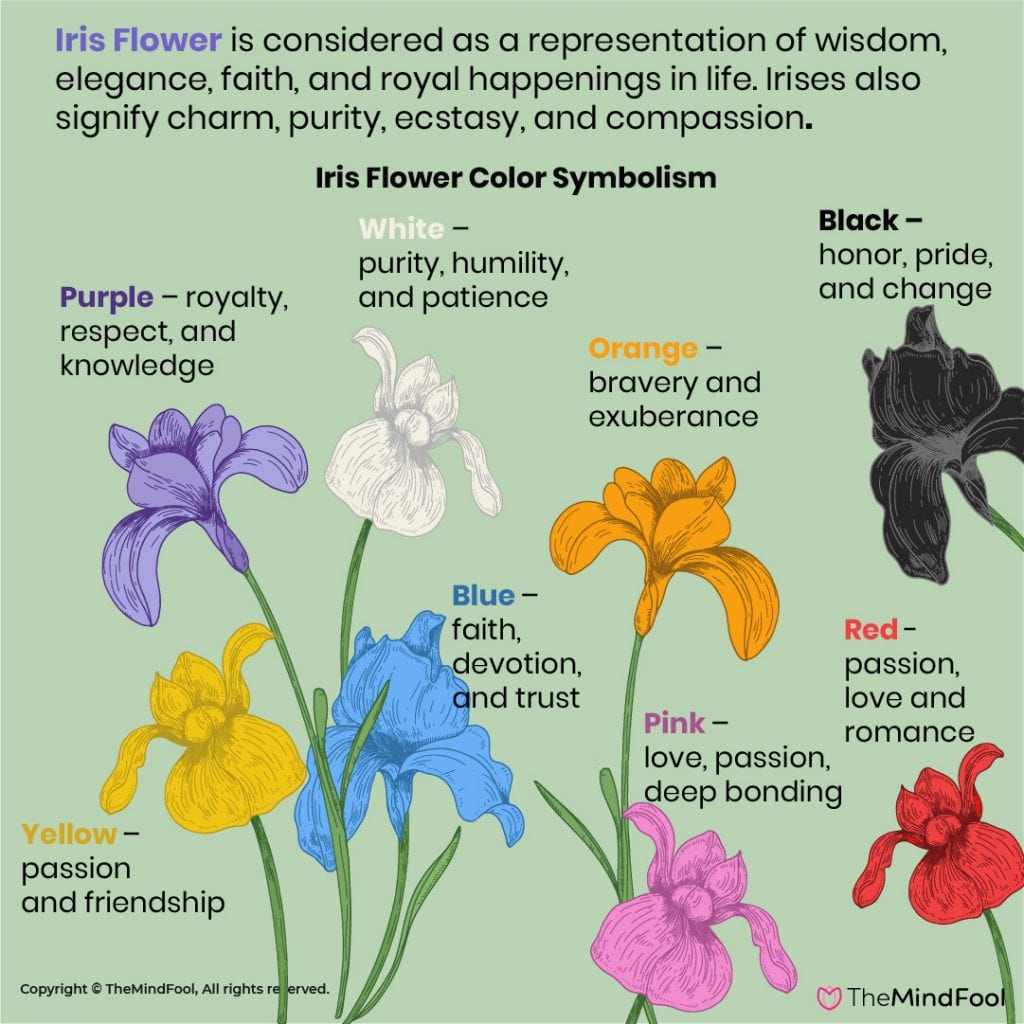The Enduring Bloom: Exploring the History, Symbolism, and Modernity of Flower Tattoos

Flower tattoos, a timeless and universally appealing form of body art, have adorned human skin for centuries. From delicate blossoms to bold, vibrant blooms, flowers offer a diverse palette of designs, each carrying its own unique symbolism and cultural significance. More than just aesthetically pleasing, flower tattoos are powerful expressions of personal beliefs, experiences, and connections to the natural world. This article delves into the rich history, diverse symbolism, and enduring popularity of flower tattoos, exploring their evolution from ancient practices to contemporary trends.
A History Rooted in Ancient Traditions:
While pinpointing the exact origin of flower tattoos is difficult, evidence suggests their presence in ancient cultures across the globe. Archaeological discoveries, such as the mummified remains of Ötzi the Iceman (dating back to 3300 BCE), revealed simple linear tattoos, suggesting an early understanding and utilization of tattooing practices. While not explicitly floral, these early markings indicate a long-standing tradition of using the body as a canvas for symbolic expression.
Further evidence emerges from ancient Egypt, where tattoos were primarily associated with women and often depicted deities, geometric patterns, and representations of nature. While direct floral depictions are less common in surviving archaeological records, the Egyptians’ deep connection to the natural world suggests a potential appreciation for floral motifs.
In various indigenous cultures, flowers often held significant spiritual and medicinal value. The Maori of New Zealand, for example, practiced a complex tattooing art form called Tā moko, which incorporated intricate spiral patterns and geometric designs. While not always explicitly floral, the natural world and its intricate beauty were integral to Maori cosmology and artistic expression.
Throughout history, flowers have been used in various rituals, ceremonies, and medicinal practices, further solidifying their symbolic importance. As tattooing practices spread and evolved, it’s plausible that flowers gradually became incorporated into the repertoire of tattoo artists, evolving into the diverse and vibrant art form we know today.
The Language of Flowers: Decoding Symbolic Meanings:
One of the most compelling aspects of flower tattoos is their rich and multifaceted symbolism. Each flower carries its own unique meaning, allowing individuals to express a wide range of emotions, beliefs, and experiences through their chosen design. Understanding the language of flowers, also known as floriography, can help you select a flower tattoo that resonates deeply with your personal narrative.
Here are some of the most popular flower tattoo choices and their associated meanings:
-
Rose: The rose, arguably the most iconic flower, is synonymous with love, passion, and beauty. Red roses symbolize romantic love, while white roses represent purity, innocence, and remembrance. Yellow roses often signify friendship and joy, while pink roses convey gratitude and appreciation. The number of roses in a tattoo can also add another layer of meaning, with a single rose often representing simplicity and devotion.
-
Lotus: Rooted in muddy waters but blooming into exquisite beauty, the lotus flower is a powerful symbol of purity, enlightenment, and rebirth. In many Eastern cultures, the lotus is associated with spiritual awakening and the triumph of the spirit over adversity. Its ability to rise above challenging circumstances makes it a popular choice for those seeking to overcome obstacles and embrace personal growth.

-
Lily: Lilies, with their elegant and graceful form, often symbolize purity, innocence, and devotion. White lilies are commonly associated with funerals and remembrance, while other colors can convey different meanings. For example, pink lilies can represent prosperity and abundance, while orange lilies symbolize passion and energy.

Sunflower: The sunflower, with its bright yellow petals and unwavering gaze towards the sun, embodies joy, optimism, and unwavering faith. It represents positivity, warmth, and the pursuit of happiness. Sunflower tattoos are often chosen by individuals who seek to radiate positivity and inspire those around them.
-
Cherry Blossom: The delicate and ephemeral cherry blossom, a symbol of spring and renewal, represents the fleeting nature of life, beauty, and love. It reminds us to appreciate the present moment and cherish the beauty that surrounds us. Cherry blossom tattoos are often associated with resilience, hope, and the celebration of new beginnings.
-
Orchid: Orchids, with their exotic beauty and intricate structure, symbolize love, luxury, and refinement. They are often associated with beauty, strength, and perseverance. Orchid tattoos can represent a deep appreciation for beauty and a desire to cultivate elegance and grace in one’s own life.
-
Daisy: Daisies, with their simple and cheerful appearance, symbolize innocence, purity, and new beginnings. They are often associated with childhood, joy, and the simple pleasures of life. Daisy tattoos can represent a carefree spirit, a youthful outlook, and a celebration of the beauty found in everyday moments.
-
Lavender: Lavender, known for its calming fragrance and delicate purple hues, symbolizes serenity, tranquility, and healing. It represents peace, relaxation, and the power of aromatherapy. Lavender tattoos can be a reminder to prioritize self-care, cultivate inner peace, and embrace the healing power of nature.

Modern Interpretations and Artistic Styles:
While traditional symbolism remains relevant, modern flower tattoos often incorporate contemporary artistic styles and personal interpretations. Tattoo artists are constantly pushing the boundaries of creativity, experimenting with different techniques, color palettes, and design elements to create unique and personalized floral masterpieces.
Some popular modern styles include:
-
Watercolor: Watercolor tattoos mimic the soft, flowing appearance of watercolor paintings, creating a delicate and ethereal effect. This style is often used to depict flowers with vibrant colors and blurred edges, giving them a dreamy and romantic quality.
-
Geometric: Geometric flower tattoos combine floral motifs with geometric shapes and patterns, creating a striking and modern aesthetic. This style often incorporates clean lines, precise angles, and symmetrical designs, resulting in a visually captivating and contemporary look.
-
Minimalist: Minimalist flower tattoos focus on simplicity and elegance, using clean lines and minimal details to create a subtle and understated design. This style is perfect for those who prefer a more refined and delicate aesthetic.
-
Blackwork: Blackwork tattoos utilize only black ink, creating bold and graphic designs. This style is often used to depict flowers with intricate details and strong contrasts, resulting in a visually striking and impactful tattoo.
-
Realism: Realistic flower tattoos aim to replicate the appearance of real flowers with incredible detail and precision. This style requires a high level of skill and artistry, as the tattoo artist must accurately capture the nuances of color, texture, and form.
Choosing the Right Flower and Artist:
Selecting the right flower and tattoo artist is crucial for creating a flower tattoo that you’ll cherish for years to come. Consider the symbolism of different flowers and choose one that resonates with your personal values, beliefs, and experiences. Research different tattoo artists and find one whose style aligns with your vision. Look at their portfolio and pay attention to their attention to detail, line work, and color blending.
Communicate clearly with your chosen artist about your ideas, preferences, and expectations. Discuss the size, placement, and style of your tattoo, and be open to their suggestions and expertise. A skilled and experienced tattoo artist can help you bring your vision to life and create a stunning flower tattoo that you’ll be proud to wear.
Conclusion:
Flower tattoos are more than just beautiful decorations; they are powerful expressions of personal identity, cultural heritage, and connection to the natural world. From their ancient roots to their modern interpretations, flower tattoos continue to evolve and captivate, offering a timeless and versatile art form that speaks to the human spirit. Whether you choose a classic rose, a serene lotus, or a vibrant sunflower, a flower tattoo can be a meaningful and enduring reminder of the beauty, resilience, and profound symbolism found in the world around us.
FAQ: Flower Tattoos
Q: Do flower tattoos fade easily?
A: The longevity of a flower tattoo depends on several factors, including the ink quality, the artist’s skill, the location of the tattoo, and your aftercare routine. Tattoos in areas that experience frequent friction or sun exposure, such as the hands, feet, or chest, may fade more quickly. Proper aftercare, including moisturizing and protecting the tattoo from the sun, can help to preserve its vibrancy and prevent fading.
Q: Are flower tattoos only for women?
A: Absolutely not! Flower tattoos are a popular choice for people of all genders. While some flowers may be traditionally associated with femininity, the symbolism of flowers is universal and can resonate with anyone. Men often choose bolder flower designs, such as roses with thorns or sunflowers with strong lines, or combine floral elements with other masculine symbols.
Q: What is the best placement for a flower tattoo?
A: The best placement for a flower tattoo depends on the size, design, and your personal preferences. Popular locations include the arm, shoulder, back, thigh, ankle, and ribs. Consider the flow of your body and choose a location that complements the shape and size of the flower.
Q: How much do flower tattoos cost?
A: The cost of a flower tattoo varies depending on the size, complexity, and the artist’s hourly rate. Smaller, simpler designs may cost around $100-$200, while larger, more intricate pieces can cost several hundred or even thousands of dollars. It’s always best to get a quote from the artist before scheduling your appointment.
Q: What is the aftercare for a flower tattoo?
A: Proper aftercare is essential for ensuring that your flower tattoo heals properly and maintains its vibrancy. Follow your artist’s instructions carefully, which typically include:
- Keeping the tattoo clean and dry.
- Applying a thin layer of aftercare ointment.
- Avoiding direct sunlight and excessive friction.
- Avoiding soaking the tattoo in water (e.g., swimming, baths).
- Avoiding picking or scratching the tattoo.
Q: Can I get a flower tattoo if I have allergies?
A: If you have allergies, it’s important to inform your tattoo artist and discuss any potential risks. Some inks may contain allergens, so it’s best to choose hypoallergenic inks or consult with a dermatologist before getting tattooed.
Q: How can I personalize my flower tattoo?
A: There are many ways to personalize your flower tattoo and make it truly unique. Consider adding personal touches, such as:
- Incorporating meaningful dates or names.
- Combining different flowers with symbolic significance.
- Adding other elements, such as birds, butterflies, or geometric shapes.
- Choosing a unique color palette or artistic style.
Conclusion:
Flower tattoos are a testament to the enduring power of nature and the human desire to express ourselves through art. Their rich history, diverse symbolism, and evolving artistic styles make them a timeless and universally appealing choice for body art. By understanding the language of flowers and choosing a skilled artist, you can create a flower tattoo that is not only beautiful but also deeply meaningful and personal. So, embrace the enduring bloom and let your skin blossom with the beauty and symbolism of the natural world.
